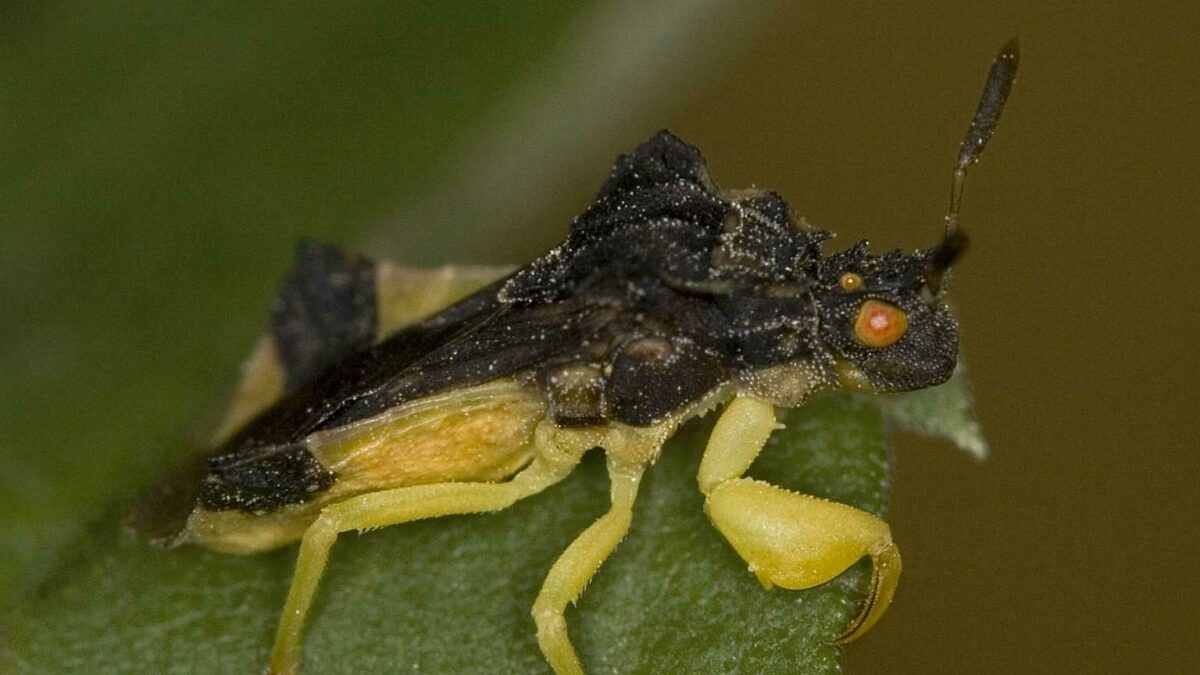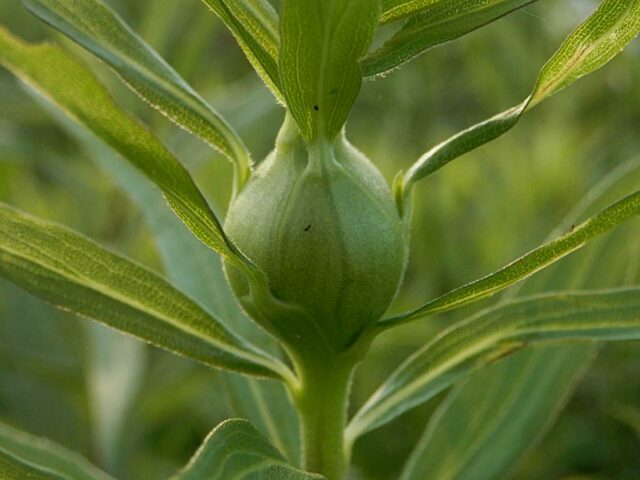A hungry predator crawls through a leafy jungle. Slow cautious movements make no sound. The well-camouflaged predator waits, motionless. Powerful forelegs stretch wide to grab its unwary prey.
Beware the goldenrod jungle!
A single goldenrod plant is a complex habitat, the leaves, stems, and flowers providing food and shelter for a bewildering variety of strange, hidden creatures. Spiders, insects of all shapes and sizes, even birds use the goldenrod plant as a hunting ground. Tiny dramas of life and death play out every summer’s day.
Since so many insects come to feast on high-energy goldenrod nectar, the flowers are a perfect place to hide if you want to catch bugs for dinner. Little crab spiders can change color — they’re white on Queen Anne’s lace, green on leaves, and turn yellow to match goldenrod flowers. Crab spiders don’t spin webs, they hide in the blossoms with forelegs outstretched. They’ll wait for hours or days without moving, until a nectar-sipping bug comes within reach.

Ambush bugs are ferocious predators that can capture prey ten times their size. They lurk just beneath the golden petals, like sharks beneath the water. When an insect leg or tongue comes close, the ambush bug strikes! Like spiders, the ambush bug doesn’t eat its prey — its long beak pokes a hole in its victim and sucks out the juices.
Jagged holes in goldenrod leaves show where beetles and caterpillars have been munching. Or you might see a narrow line, like someone scribbled on the leaf with a white pencil. Tiny insect larvae called leaf miners chew their way through the leaf, leaving a wandering trail behind them. Larger bugs like praying mantises and walking sticks prowl the golden jungle, as well as dozens of species of birds like sparrows and chickadees.
By the way, contrary to popular belief, goldenrod does not cause hay fever. The poor innocent plant has been wrongfully implicated in a crime it did not, and never will, commit. Goldenrod pollen is not carried on the wind. Goldenrod flowers are bright yellow in order to attract bees and other insects, which pick up the pollen and carry it from plant to plant. Goldenrod pollen does not blow long distances on the breeze, it’s too heavy. Ragweed, an inconspicuous plant which coincidentally blooms about the same time of year as goldenrod, has greenish, tiny flowers that insects never notice – the plant relies on the wind to carry its billions of pollen grains far and wide.
Each species of goldenrod hosts its own unique food web. There are more than a hundred goldenrod (Solidago) species: sweet goldenrod, early goldenrod, lance-leaved goldenrod, seaside goldenrod, bog goldenrod… Trying to identify them is a botanist’s nightmare, but insects like the Goldenrod Gall Fly (Eurosta solidaginis) manage it easily. Special chemical receptors, like taste buds in the insect’s feet, reveal which species is which. Gall flies prefer to lay eggs on Canada goldenrod (Solidago canadensis), although they’ll also use other kinds.

If you feel a round bump on a goldenrod stalk, you’ve found a ball gall — the snug home of the gall fly larva. In spring, a female gall fly lays a single egg inside the goldenrod stem. The egg hatches and the larva begins to eat the plant. The insect’s saliva contains growth hormones which cause the stem to swell and create a weatherproof home around the larva. The little insect spends many cozy months inside the gall, surrounded by food.
But the larva isn’t always safe in its round home. Wasps can pierce the gall with a long ovipositor (egg-laying tube) and lay eggs inside the gall. When the eggs hatch, the young wasps will feed on the gall fly. Or sometimes, woodpeckers and chickadees will peck a hole into the gall to devour the tasty larvae.
Predators and prey. Life and death. All are woven together in the goldenrod jungle.
